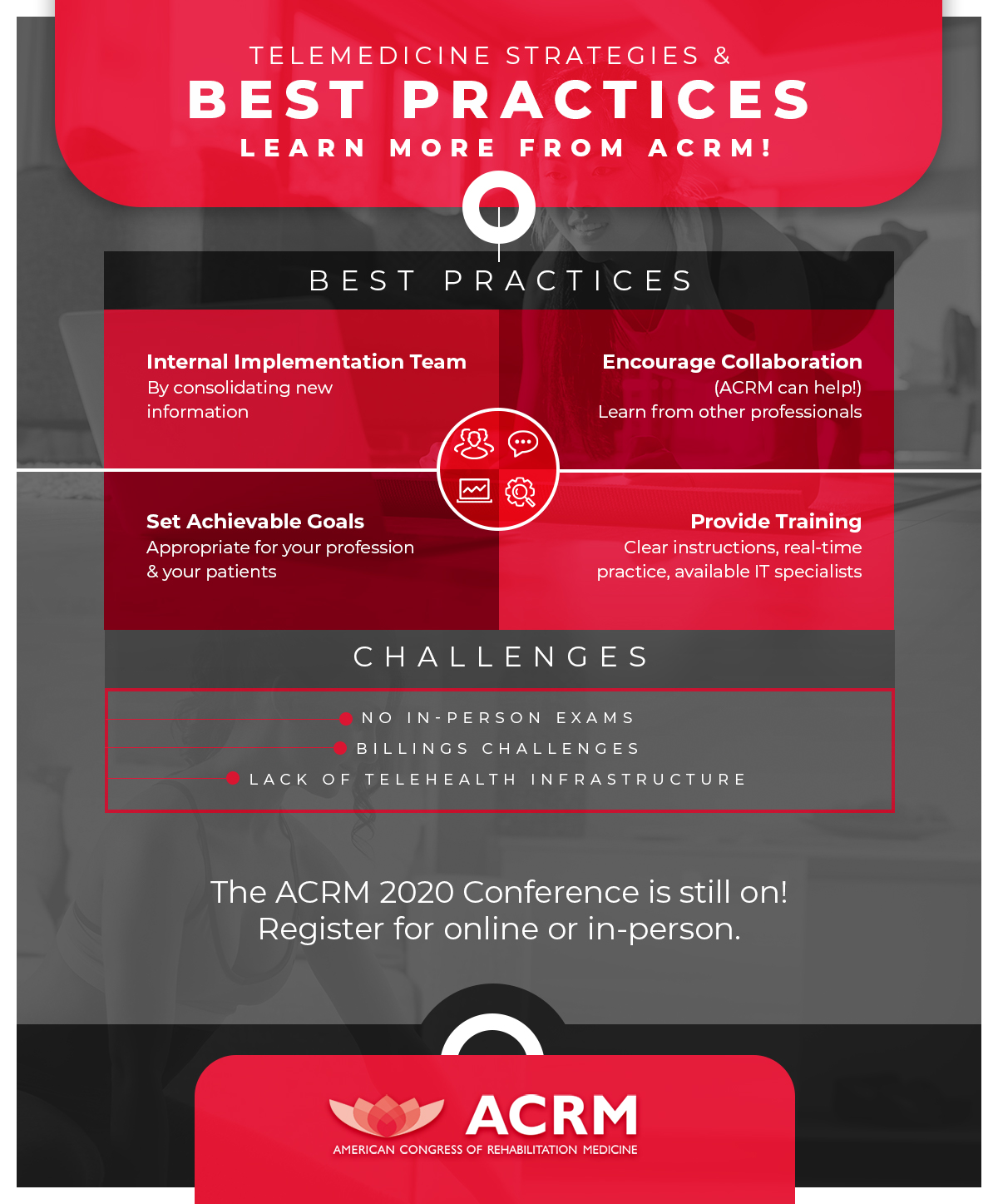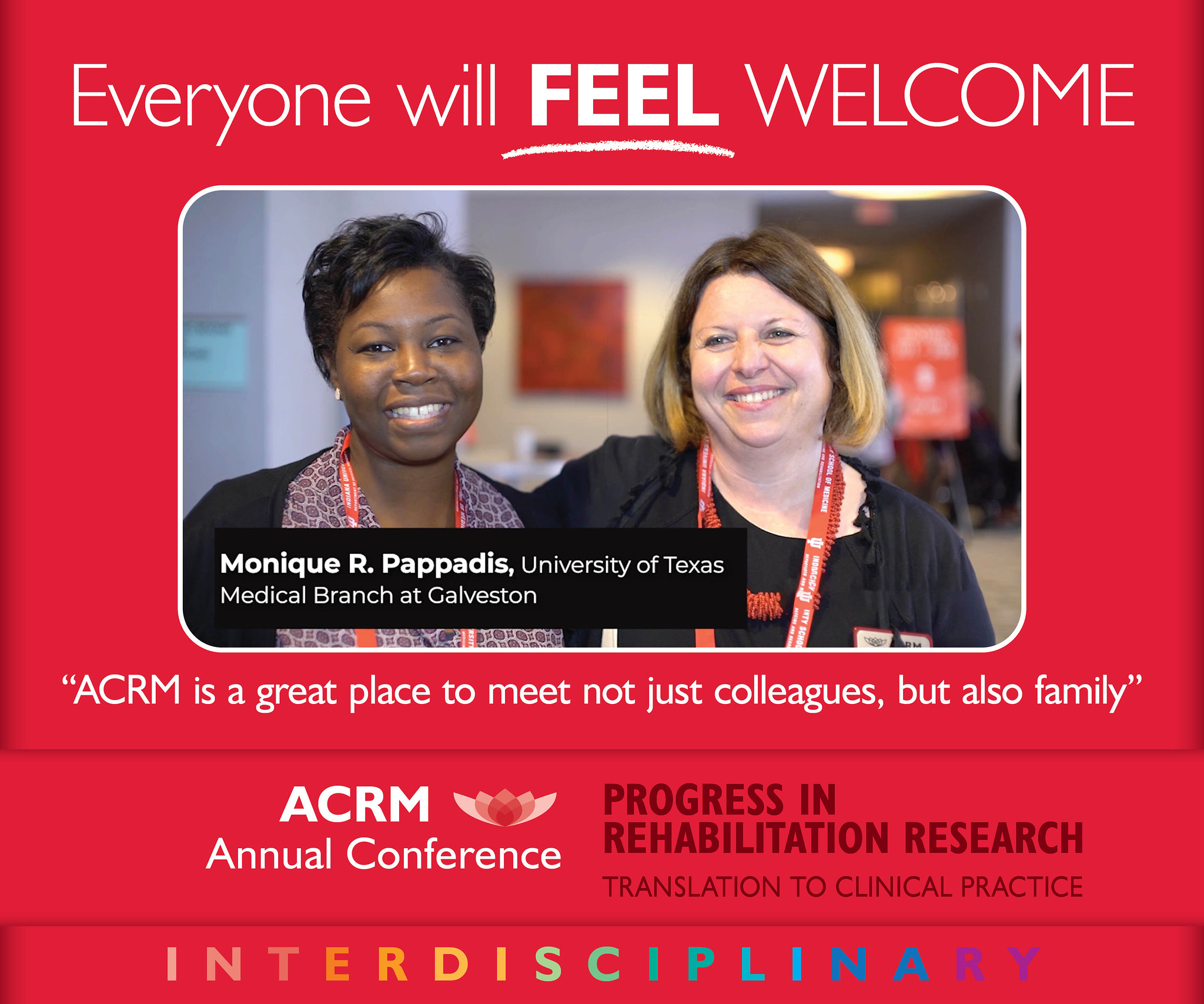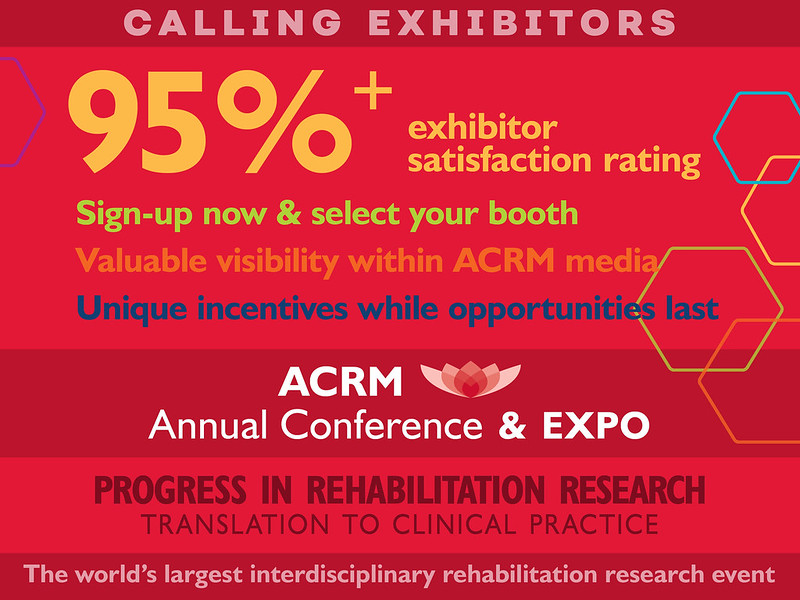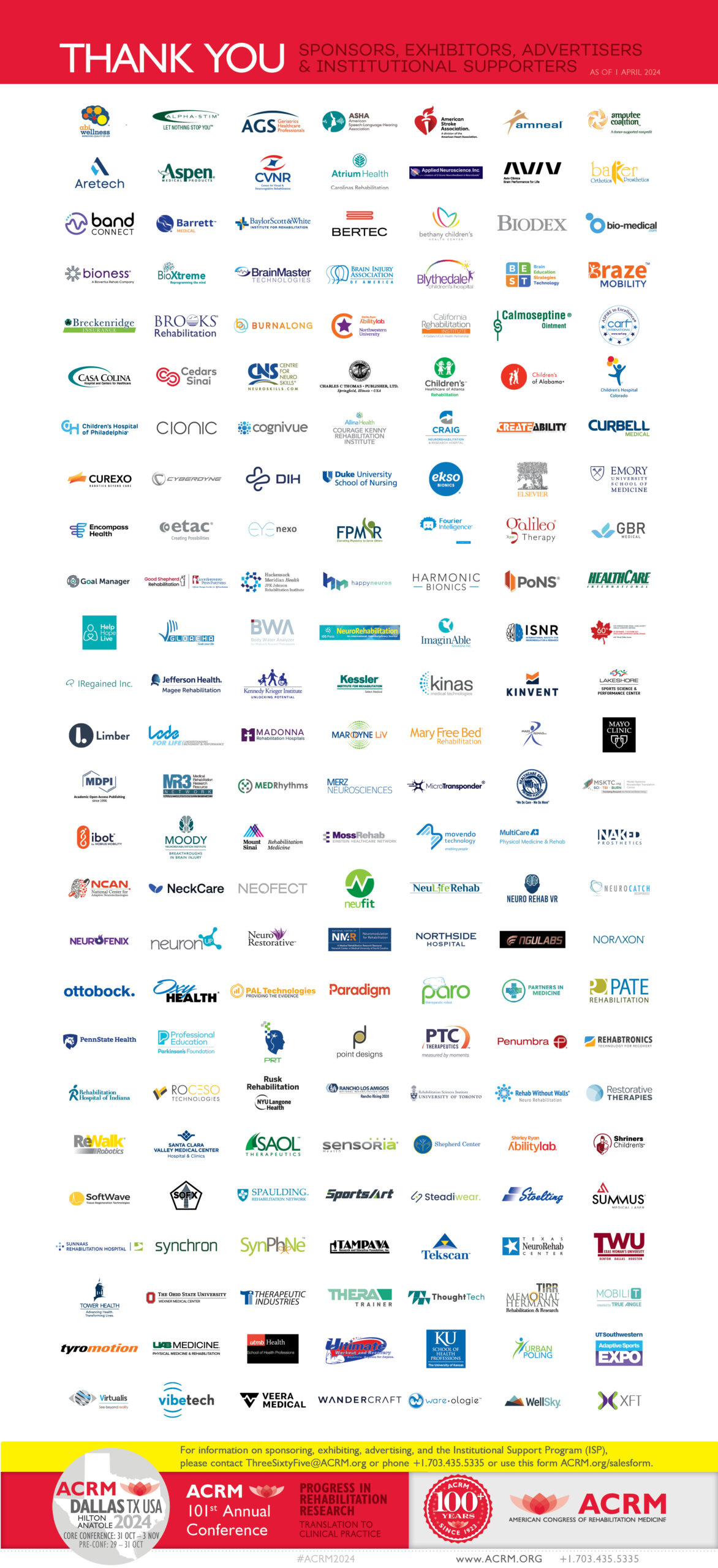As the COVID-19 crisis continues, all of us here at ACRM and all of our members are working hard to continue services for clients and continue their own research. We all want to make sure that our patients don’t fall through the cracks, and for many of us, that means relying on telemedicine.
Our 97th Annual ACRM Conference is on for the fall, as planned, and we are doing our very best to record all of the sessions. We will live-stream the event and are working on exciting new virtual networking opportunities so that all attendees can still build community and connections with other professionals in the field of rehabilitation medicine and rehabilitation research. Register online today and have access to the conference from the safety of your home, AND, if we are able to hold the event in-person, your seat will be reserved.
At the conference in Atlanta, we’re working hard to make sure that everything is as safe as possible for attendees. Hand-shaking will be replaced with waves and smiles, our conference spaces will be spaced according to CDC guidelines, to allow us to accommodate everyone. If you cannot come to the ACRM 2020 Conference for any reason, don’t worry — the conference is coming to you! Learn more and register today!
Telemedicine Strategies and Best Practices
As more and more people are diagnosed with coronavirus, all medical professionals are being urged to expand their use of telemedicine. From physical therapists to speech-language pathologists, to rehabilitation researchers, we are all adjusting our practices to keep ourselves, our patients, and our communities safe. Here are a few strategies and best practices we’d like to share with you to help you as you continue to navigate this moment.
Have an internal implementation committee
If you haven’t been providing telehealth services prior to COVID-19, it’s important to create a committee to help guide the integration of telemedicine services into your practice. Be sure to get everyone’s input and adjust as time goes on.
Encourage collaboration
ACRM professional networks and education courses are a great way to see how others in the field of rehabilitation medicine are utilizing telemedicine. This moment is challenging, but it is also an opportunity to build relationships with others and work collaboratively. It is important to develop a solution that is not totally self-servicing. One that works for patients and helps them adjust to having multiple health care providers working remotely.
Set achievable goals
There is so much you won’t be able to do through telehealth — but there’s also so much that you can do! Just be sure to set goals that are appropriate for your profession and your patients. Figure out what you need — for example, you may need to secure infrastructure for your network or apply for a grant to build your system — and then set goals that meet those needs.
Provide training opportunities
For many, this may be the first time providing telehealth services. Even if you have been utilizing telemedicine, it hasn’t been during a pandemic! It’s important to have regular meetings and training. However, just as you set achievable goals, don’t overwhelm the staff with too much information. Have clear, simple instructions and practice with one another. Have IT staff present to help trouble-shoot in real time. It’s best to practice as much as possible in real time so that you can better solve problems during appointments.
Barriers
There are obvious barriers to telehealth, and it can be especially difficult for those in the rehabilitation field. Many of us work closely with our patients, and, for example, it can be extremely challenging to teach exercises for someone with a spinal cord injury or monitor a patient’s progression from a traumatic brain injury.
Many rehabilitation centers have closed completely, but doctors and patients alike are coming up with creative ways to continue to provide service. Patients who have been referred to a rehabilitation medicine professional have found it incredibly difficult to begin services and even though in-person examinations are not possible, it is better to keep engaged and in contact with patients and provide some guidance for what they can do at home.
Another issue is how to bill for patient care since full service is not possible. In some cases, the office may not have a billing structure for telehealth or a patient’s insurance may not cover it. Some healthcare professionals are choosing to continue to provide whatever telehealth services they can, even if they are not getting paid at the moment or billing is still being worked out.
ACRM – American Congress of Rehabilitation Medicine
The mission of our non-profit organization is to improve the lives of disabled people through rehabilitation medicine and research. Our research groups cover a wide range of topics, from brain injury to neuroplasticity, cancer, and more. There is always something new happening in the field of rehabilitation research, even during a pandemic.We work with hospitals, universities, professional and advocacy organizations, and rehabilitation professionals around the world. We have 3,000+ members from more than 65 countries and produce the ACRM Journal. Learn about the benefits of joining ACRM as well as membership dues and how to apply. You can also learn more about the ACRM Conference and register for either in person or online here.











